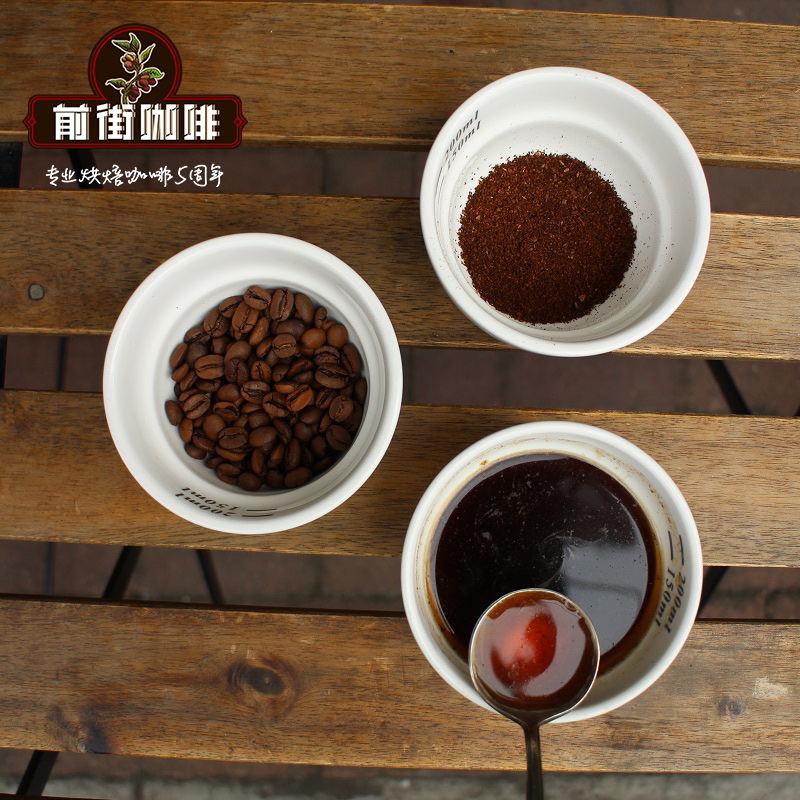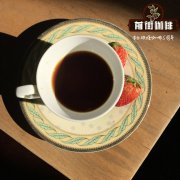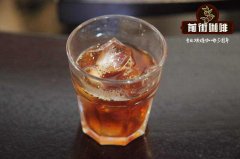Which brand of Indonesian coffee is better? What's so special about the treatment of Sulawesi coffee in Indonesia?

Professional coffee knowledge exchange more coffee bean information please follow the coffee workshop (Wechat official account cafe_style)
Which brand of Indonesian coffee is better? What are the characteristics of the treatment of Indonesian Sulawesi coffee?
The Tana Toraja mountain area in southwestern Sulawi, Indonesia, with an elevation of 1700 meters, is an alpine volcanic terrain with sufficient sunlight, a large temperature difference between day and night, and a normal temperature of 24 ℃-25 ℃. High-quality Arabica beans are grown because of the volcanic weakly acidic soil in the fertile tropical highlands. Toraja coffee beans are very similar in appearance to Mandheling coffee in Sumatra and are full of grains. It is handled by the traditional Indonesian Natural Process / Semi-washed method. The best Toraja coffee beans come from Kalosi, with an annual output of only 3000 barrels, each with a code, and each barrel of coffee beans carved by hand. It is the only handicraft in the world and is very expensive.
Indonesia is the largest archipelago country in the world. Arabica tree species coffee was introduced and planted during the Dutch rule in the 18th century. The main producing areas are in Sumatra, Java and Sulawesi. Mantenin's deep, low-acidity and rich taste makes people call it the 'most important coffee in the world'. It is also the fourth largest producer in the world with an annual output of 7 million bags. Coffee is harvested twice a year from May to June and from September to October, with the highest production in Sumatra and Aceh. The scale of the coffee farm is not about 1-3 hectares. Mantenin coffee treatment in Indonesia generally adopts semi-washing method. Coffee farmers harvest ripe coffee beans, remove the external peel and pulp but retain the thin film tissue on the coffee beans, and remove the bad beans that do not bear fruit and float on the water surface through the process of immersion and fermentation, while the strong and sunken beans can be sunlit or directly to the ground with the surface film. Finally, a dryer is used to make the moisture content reach a unified standard. The most unique thing is to use parchment to cover coffee beans with a thin film to maintain a moisture content of 18%. Before shipment, the coffee bean surface film is polished and cleaned. The world calls this section of the special treatment method called Indonesian-style semi-washing method, large coffee processing plants can accurately control each treatment process, flavor and taste has a certain level. On the other hand, small coffee farmers treat raw beans in their own yard, and the flavor will vary according to the handling methods and skills of different coffee farmers.
About 70,000-80,000 bags of coffee produced in Sulawesi, Indonesia's third largest island, account for only 9% of Indonesia's coffee production. Coffee grows in the rainforest of 750-1500 meters above sea level. High-quality coffee is mostly grown around the Toraja platform in the southwest. Tonaga is located at an altitude of 1500 meters above sea level on the equatorial belt shrouded with rain in the afternoon. Coupled with the fertile volcanic soil, these are the best natural climate and environment for coffee growth. Most Indonesian coffee is sold, sold and exported by local coffee companies. Direct coffee has been introduced to small-scale Binalestari coffee merchants in Sulawesi Tonaga. Coffee is several grades G1 in Arabica, and the color of raw coffee beans is long rice-shaped and bright emerald green. Different from the yellowish brown of gold manning and Sumatra manning (compared with photos on the blog), and there are fewer defective beans and poorly fermented white beans, it is a good coffee on a small estate with a less disturbing smell of soil.
The farmland of local small farmers in Toraga is located above 1400 meters, and the batch planting of The Barn is even higher above sea level. Soybean variety Smuri 795 is a high quality Typica Hybrid, which is more resistant to disease than general Tibica. This Toarco Jaya is smooth, easy to taste, and very sweet. Dried plum and licorice flavor, nutmeg and winter spice flavor, Italian concentrated or made into Italian base drink, hand flushing is also very suitable.
Toraja has marked the coffee merchant as Bina lestari on the coffee bean bag.
Coffee tree species is Arabica, and the best grade is G1 first-grade beans (G2.G3 in sequence)
The end of shallow baking (City): after grinding the beans, there is a clear taste of fairy grass, the special aroma of ginseng and licorice is not disturbing earthy and fishy smell, the taste is clean, light and complex, not bright citrus acid and sweet honey, and the finish has the aroma and tea feeling of alpine oolong tea.
Re-baking second explosion (Full City): the coffee has the aroma of creamy popcorn after grinding, the sweetness of dark chocolate after brewing, the complex aroma and smooth ester taste, and the sweetness of longan honey and brown sugar in the finish.
If the Sulavitonaga coffee is roasted to a slightly strong to strong flavor, it has a rich maltose taste and a low herbal flavor of Indonesian mantenin, which is very different from light roasting and is a great choice on a par with golden manning.
Flavor: Sulawesitonaga also maintains the ancient traditional mode of production in Indonesia. Small-area coffee farms also have washed, dried and semi-washed coffee beans, which is the most special area of all Indonesian coffee beans. although its concentration is not as thick as Sumatra Mantenin, it has a little more smoothness and less earthy and mushroom flavor. The acidity also improves and leaves a refreshing fruity flavor. Dried plums, licorice, nutmeg, smooth taste.
Qianjie recommended cooking:
Filter cup: KONO filter cup
Water temperature: 88 degrees
Degree of grinding: small Fuji degree of grinding 4
Cooking method: the ratio of water to flour is 1:14, 17g powder, 25g water for the first time, steaming for 30s, and 238g water for the second time. The extraction time is about 2:30 seconds.
Analysis: there are not many ribs at the bottom of the Kono cup, and the filter paper clings to the filter cup to achieve the purpose of limiting air flow, which can make water and coffee powder have longer contact soaking time in the filter cup and ensure the extraction time and extraction rate of rough grinding. In this way, the coffee powder can be fully extracted, enhance the mellow taste and make the taste more concentrated.
Important Notice :
前街咖啡 FrontStreet Coffee has moved to new addredd:
FrontStreet Coffee Address: 315,Donghua East Road,GuangZhou
Tel:020 38364473
- Prev

Indonesia's delicious coffee brand-Sulawesi coffee bean Toraja Tonaga's planting history? Such as
Professional coffee knowledge exchange more coffee bean information please follow the coffee workshop (Wechat official account cafe_style) Indonesia's delicious coffee brand-Sulawesi coffee bean Toraja Tonaga's growing history? How to cook Sulawesi coffee beans? Sulawesi is the fourth largest island in Indonesia, the island is shaped like an orchid, the shape is very distorted, but also like the English word K, so Indonesians
- Next

One of the best coffee brands in Indonesia | how about coffee in Indonesia [Sulawesi Toraja Coffee]
Professional coffee knowledge exchange more coffee bean information please follow the coffee workshop (Wechat official account cafe_style) one of the best coffee brands in Indonesia. How about Indonesian [Sulawesi Toraja Coffee] coffee? How to cook it? On the island of Sulawesi under Indonesia's jurisdiction, the equatorial line crosses the northern peninsula and covers an area of 170,000 square kilometers, about the size of five Taiwan.
Related
- Detailed explanation of Jadeite planting Land in Panamanian Jadeite Manor introduction to the grading system of Jadeite competitive bidding, Red bid, Green bid and Rose Summer
- Story of Coffee planting in Brenka region of Costa Rica Stonehenge Manor anaerobic heavy honey treatment of flavor mouth
- What's on the barrel of Blue Mountain Coffee beans?
- Can American coffee also pull flowers? How to use hot American style to pull out a good-looking pattern?
- Can you make a cold extract with coffee beans? What is the right proportion for cold-extracted coffee formula?
- Indonesian PWN Gold Mandrine Coffee Origin Features Flavor How to Chong? Mandolin coffee is American.
- A brief introduction to the flavor characteristics of Brazilian yellow bourbon coffee beans
- What is the effect of different water quality on the flavor of cold-extracted coffee? What kind of water is best for brewing coffee?
- Why do you think of Rose Summer whenever you mention Panamanian coffee?
- Introduction to the characteristics of authentic blue mountain coffee bean producing areas? What is the CIB Coffee Authority in Jamaica?

